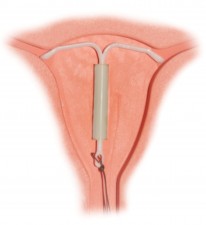
Various methods of birth control for women have existed for hundreds of years, and they are constantly being updated, although not necessarily improved. Bayer is a large pharmaceutical company with products and devices in many different regions of the business; anything from aspirin to contraceptives. One product manufactured by Bayer is the Mirena IUD, or intra-uterine device. This device has been under much scrutiny recently.
The Mirena IUD had been approved by the United States Food and Drug Administration (FDA) in 2000 as an acceptable birth control product. The device had previously been in use in Europe for some time. In 2009, the Food and Drug Administration (FDA) issued a warning to Bayer regarding their marketing materials for the Mirena IUD. They stated that Bayer’s marketing material overstated the efficacy of the Mirena IUD and that it minimized the risks of using the device.
One risk involved in using the Mirena IUD is the risk of a Mirena IUD expulsion. A Mirena IUD expulsion occurs when the device spontaneously becomes detached and removed from its proper location. This can result in the device coming entirely out of the woman’s body. In some cases, the woman does not even realize that her Mirena IUD has become expelled from her body. This can be a problem because once the Mirena IUD has come out, the woman is much more likely to become pregnant again.
If a woman experiences a Mirena IUD expulsion and the device remains in her body, she may experience the spontaneous migration of the device which can lead to potentially severe Mirena IUD complications. In one case, a woman reported the Mirena IUD migrating and becoming lodged in her liver. In some cases, the Mirena IUD expulsion can lead to perforation causing pain and potentially long-lasting complications.
In some of the most severe Mirena IUD expulsion and perforation cases, some women have been required to undergo a hysterectomy, or the removal of the uterus, which leads to Mirena IUD infertility and other potentially life-long complications. When the Mirena IUD shifts out of its proper location, it is no longer effective at preventing pregnancy and must be removed. Depending on how the device is situated, the Mirena IUD removal surgery can be fairly complicated.
The spontaneous migration and perforation of a Mirena IUD are side effects that Bayer should have more clearly explained to consumers and medical professionals. For that reason, many women who have experienced these unfortunate consequences of the device are filing Mirena IUD lawsuits claiming damages for injuries suffered from the potentially dangerous device.
Mirena IUD Lawsuit
If you or a loved one has suffered from spontaneous migration of a Mirena IUD after implantation, they may be entitled to financial compensation through a Mirena IUD lawsuit. Mirena IUD cases may range widely in severity. In the most common cases, the Mirena IUD perforates the uterus and is embedded in the omentum which requires a laparoscopy under general anesthesia to remove.
Call today if you believe you have grounds for a Mirena IUD lawsuit against the manufacturers of these products. Millions of women across the country are currently using the device and thousands have reported severe and uncomfortable adverse effects caused by the Mirena IUD. The makers of the device warned about certain side effects and about perforation, but only perforation which happens during the surgery, as a result of improper insertion. They did not warn that a properly placed Mirena IUD may shift over time and cause severe Mirena IUD complications. For that reason, if you have experienced Mirena IUD complications after undergoing a successful insertion, you should call today to speak with a Mirena IUD lawyer to discuss your potential Mirena IUD Lawsuit.

